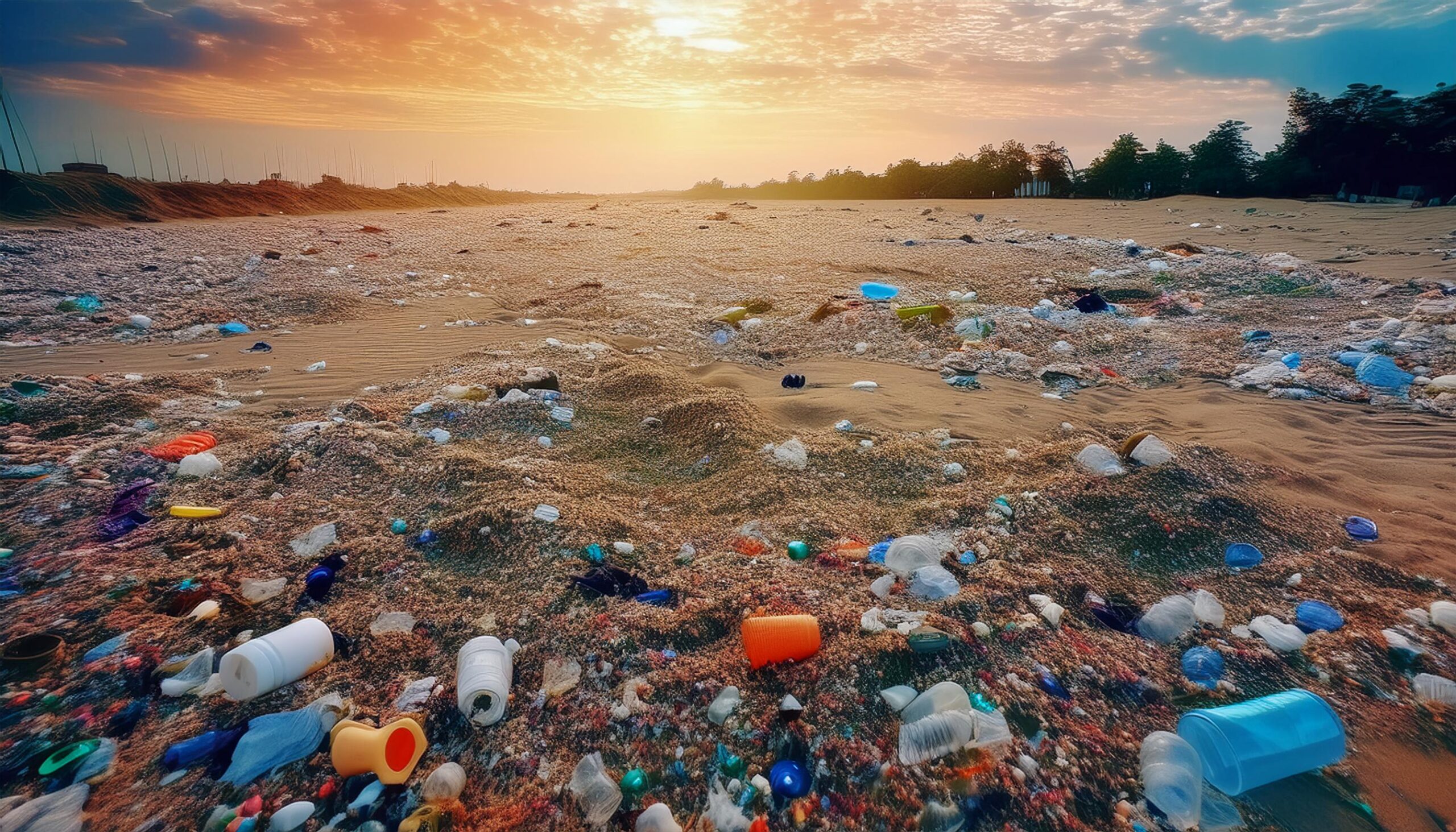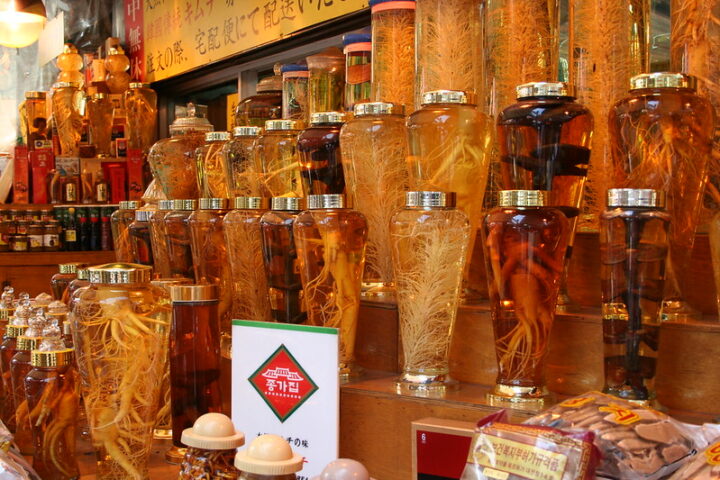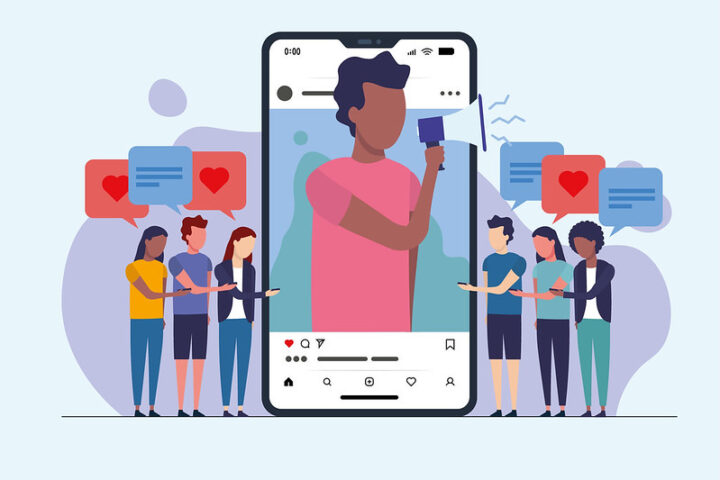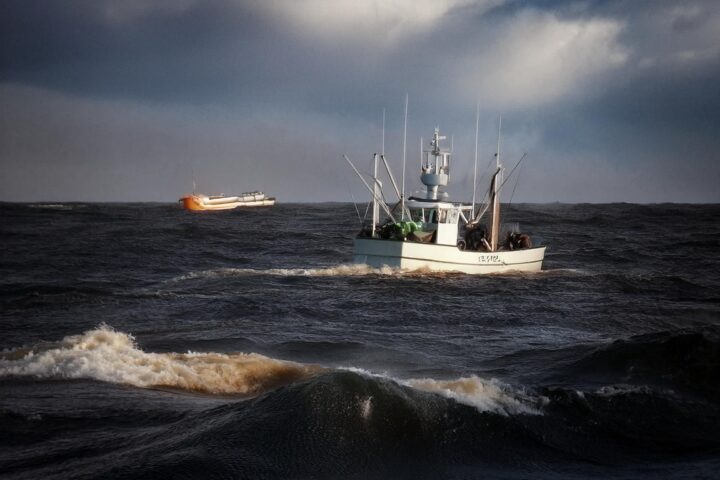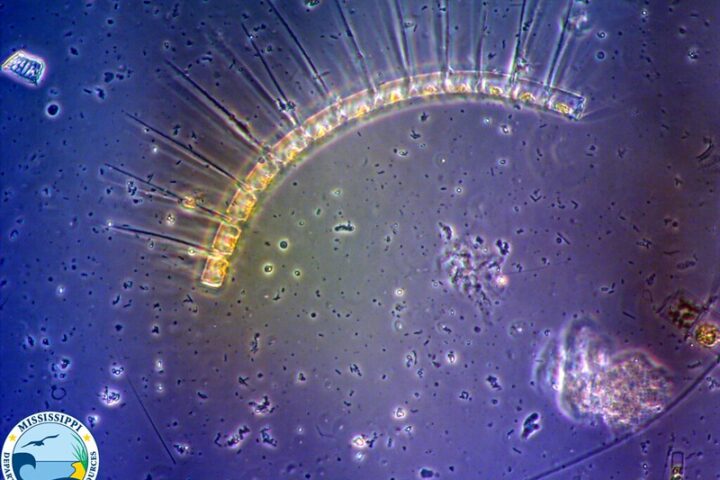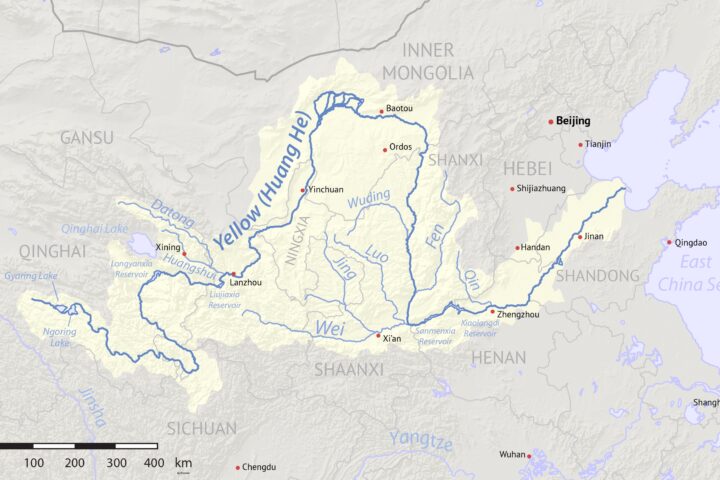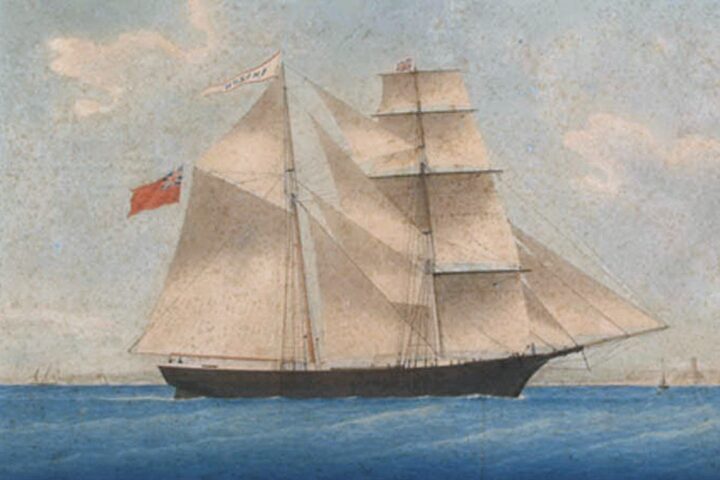Source: Firefly_Generative AI- Microplastics are tiny pieces of plastic less than 5 millimeters in size.
Read about microplastics which have terrorized the food industry. Understand how a tiny piece of plastic puts the whole human civilization at risk.
Microplastics are the new villain in town and have made their presence known by capturing the attention of researchers and environmentalists. These tiny pieces of plastic are extremely small and hard to notice which makes them the perfect candidate for slipping through into ecosystems, industries and even, food.
Plastic pollution has been around for the longest time but microplastics are fairly new and pose completely new questions about the safety of the environment, wildlife, and human livelihood.
Microplastics are plastic particles of a size less than 5 mm (0.2”) that are part of the plastic pollution. These are found in many products such as facial creams, synthetic garments, plastic bouquets, and bottles that easily get disposed of into the environment.
Microplastics are termed as primary microplastics and secondary microplastics. Primary microplastics are: micro plastic beads used in skin care items, industrial manufacture micro plastic pellets also known as nutshells, and microplastic ‘clothes’ such as nylon. Such microplastics are disposed in the environment via several processes including washing of cosmetics away into drainage systems, spillages during manufacturing and transportation or simply from the washing of synthetic clothes.
On the contrary, secondary microplastics are smaller pieces derived from the dissection of bigger plastic objects. As such plastic items get subjected to environmental stresses such waves, wind and sun rays the large particles gradually reduce in size.
Harms
Microplastics threaten the environment as well as animal and human health in quite a lot of ways:
- Microplastics are not biodegradable and will thus remain in the environment. Primary or secondary Microplastics have been located in a wide range of environment ranging from oceans to Freshwater bodies. It was estimated that the rate of plastic pollution, makes its way into the oceans alone through all sorts of plastic, was between 4 to 14 million tons annually during the early years of the twenty first century.
- In this way, microplastics in household dust, and in the air as fibrous and other particles, are also a source of air pollution, while the health impact of breathing in such particles is unknown.
- Marine Seawater is found being polluted by microplastics and according a report published in 2018, more than 114 aquatic species had contained some microplastics in their bodies. These particles have been ingested and lodged within the alimentary canal systems and tissues of some invertebrate marine organisms such as crabs. Aquatic creatures such as fish and also even birds, flying near the sun and swimming in the waters, consume microplastics found there believing it is food. Ingesting microplastics compels some aquatic species to depress their food intake in order to maintain energy required for other life-sustaining activities, which leads to neurological and reproductive toxicity. There is also concern that microplastics may also be transferred from smaller organisms to micro-predators (zoo plankton or small fish) which are then consumed by larger marine predators.
- Microplastics have been found in a variety of foodstuffs, including drinking and bathing water, beer, seafood and even table salt. It has been pointed out that this interesting element is also found in the stool remains of people.
These are not small worries and are surely going to cause a lot of issues in the years to come.
The Current Scenario
The main problem at hand is that Microplastics are everywhere. Everything and anything plastic you own can become the source for microplastics and very well lead to hazardous pollution in the future.
More than 6 billion tons of plastic can be found in the world which is choking it up. In 2019 alone, 353 million tons of plastic waste were produced and according to projections, this number will multiply thrice and become over one billion metric tons by 2060. Plastics contain more than 10,000 different chemical substances known to contain carcinogens. All these eventually find their way into the bodies of humans as microplastic and nano plastic particles with a diameter of less than 5mm and 1 micron respectively.
Microplastics and nano plastic particles (MNP) are particularly taken in to the body through ingestion or the other way around. MNPs can be ingested with foods and drinks that have been kept or heated in plastic recipients from which MNPs have leached into the food or with will MNPs found in some cosmetic products like toothpaste. Disturbingly, one study stated that babies are likely to come across a high amount of microplastics in formula fed from polypropylene bottles.
Some good sources of these MNPs include:
- Cigarette filters which are the most common plastic litter found on beaches and release microplastics when they break down.
- Clothing and textiles are another prominent source we all need to look out for.
- Cosmetics.
- Fertilizers.
- Sewage Sludge which gets mixed in with the ocean water.
Solution?
Over the past few decades, however, there has been contamination of lung tissues by microplastics, as well as maternal and fetal placental tissues, breast milk and even blood. Last year new findings published in Environment International proved that these tiny particles can find their home into human bloodstream.
The problem of exploitation of plastics and pollution with waste has attracted the organizations like the United Nations Expert Panel of the United Nations Environment Programme to reach over one hundred countries with educational campaigns to prevent plastic pollution as well as encourage proper disposal and re-use. Many scholars have also fought it internationally by implementing measures to remove marine refuse and spatial pollution from microplastic. For instance, the United States passed the case of Microbead-Free Waters Act in 2015 which prohibited the production and marketing of wash-off cosmetic products with plastic microbeads – an example of some inspired breakthrough towards such initiative restrains. Many other countries have implemented similar bans.
In case of individual level fights against using this tiny evil, Tracey Woodruff, UC San Francisco Professor of Obstetrics and Gynecology and Reproductive Sciences, has the perfect solutions:
- Woodruff’s first advice, which she applied to her family’s food as well, is to avoid microwaving food. As stated by her, “Heat makes plastic release harmful chemicals like BPA so I always microwave in ceramic or glass – that’s a really easy one.” Buying water and steel bottles and utensils are much better than buying plastic stuff and last just as long.
- Food isn’t safe either and so, many food items should be eaten less frequently and with more care. Woodruff added that she herself buys “organic as much as possible to reduce our exposure to pesticides” and that “Many chemicals like to hang out in fatty food, so reducing your red meat intake is also a good way to reduce chemical exposures”.
- Cleaning stuff doesn’t have to be toxic either. Baking soda, vinegar, and warm water can clean just as well as chemical cleaners. Other than this, cleaning products from Environmental Protection Agency can be used. Vacuum cleaners should have a HEPA filter installed which will help in controlling dust.
Tips like this, given by legitimate researchers and environmentalists, are extremely important and should be adopted without delay. The danger that lurks in almost every other place on this planet (even in our bloodstreams!) shouldn’t be taken lightly. Already existing plastic pollution has to be removed and future contamination needs to be prevented.
Resources
- Microplastics | Definition, Properties, & Plastic Pollution | Britannica. (2024). In Encyclopædia Britannica. https://www.britannica.com/technology/microplastic
- Lee, Y., Cho, J., Sohn, J., & Kim, C. (2023). Health Effects of Microplastic Exposures: Current Issues and Perspectives in South Korea. Yonsei Medical Journal, 64(5), 301–301. https://doi.org/10.3349/ymj.2023.0048
- https://www.facebook.com/unep. (2023). Microplastics: The long legacy left behind by plastic pollution. UNEP. https://www.unep.org/news-and-stories/story/microplastics-long-legacy-left-behind-plastic-pollution
- Microplastics are everywhere — we need to understand how they affect human health. (2024). Nature Medicine, 30(4), 913–913. https://doi.org/10.1038/s41591-024-02968-x
- Microplastics are in our bodies. Here’s why we don’t know the health risks. (2023, March 24). Science News. https://www.sciencenews.org/article/microplastics-human-bodies-health-risks
- I’m a Microplastics Researcher. Here’s How To Limit Their Dangers. (2024, February 27). I’m a Microplastics Researcher. Here’s How to Limit Their Dangers | UC San Francisco. https://www.ucsf.edu/news/2024/02/427161/how-to-limit-microplastics-dangers

